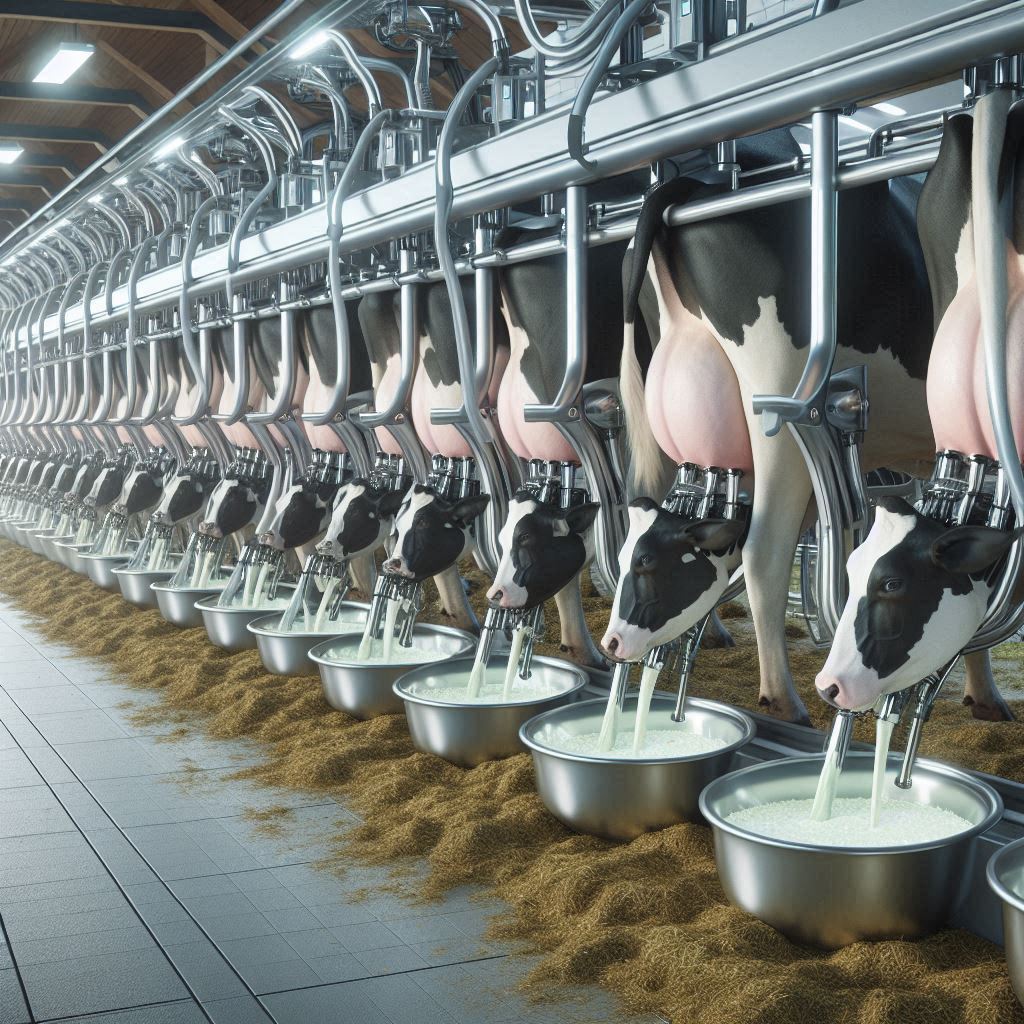The milking robots market is witnessing rapid growth, with the dairy cattle segment poised to dominate the market during the forecast period. Milking robots, also known as automatic milking systems (AMS), have revolutionized the dairy industry by automating the milking process, increasing efficiency, and enhancing milk production. This article explores the factors driving the dominance of the dairy cattle segment in the milking robots market, key market dynamics, challenges, and future prospects.
Key Drivers
1. Rising Demand for Dairy Products: The global demand for dairy products, including milk, cheese, and yogurt, continues to rise. This increased demand necessitates efficient and reliable milk production processes, driving the adoption of milking robots in dairy cattle farms.
2. Labor Shortages and High Labor Costs: Dairy farming is labor-intensive, and many regions face labor shortages and high labor costs. Milking robots offer a solution by automating the milking process, reducing the reliance on manual labor, and lowering labor costs.
3. Technological Advancements: Innovations in milking robot technology, such as improved sensors, data analytics, and automation, have made these systems more efficient and user-friendly. These advancements enhance milk yield, improve animal health monitoring, and provide farmers with valuable data for better herd management.
4. Improved Animal Welfare: Milking robots offer a more consistent and gentle milking process, reducing stress on dairy cattle. This leads to improved animal welfare, increased milk production, and better overall herd health, making milking robots an attractive investment for dairy farmers.

Download PDF Brochure @ https://www.marketsandmarkets.com/pdfdownloadNew.asp?id=170643611
Market Dynamics
1. Segment Focus: The dairy cattle segment dominates the milking robots market due to the high demand for milk and dairy products. These robots are designed to handle large herds, providing efficient and consistent milking, which is essential for dairy farms.
2. Regional Insights: Europe leads the milking robots market, driven by advanced dairy farming practices, high labor costs, and supportive government initiatives. North America follows closely, while the Asia-Pacific region is expected to witness significant growth due to increasing dairy consumption and modernization of dairy farms.
3. Competitive Landscape: Key players in the milking robots market, such as Lely, DeLaval, GEA Group, and BouMatic, are focusing on technological innovations, strategic partnerships, and expanding their product portfolios to strengthen their market position.
Challenges
1. High Initial Investment: The high cost of milking robots can be a significant barrier for small and medium-sized dairy farms. The initial investment includes the cost of the robots, installation, and necessary infrastructure modifications, which can be substantial.
2. Technical Complexity: Operating and maintaining milking robots require technical expertise and regular maintenance. Farmers need to be trained to handle these advanced systems, and technical support must be readily available to address any issues that arise.
3. Adaptation Period: Dairy cattle need time to adapt to milking robots. During this adaptation period, milk production may temporarily decrease, which can be a concern for farmers. However, with proper management and support, cattle can adjust to the new system, leading to long-term benefits.
Future Prospects
1. Integration of IoT and AI: The integration of Internet of Things (IoT) and artificial intelligence (AI) technologies with milking robots is expected to drive future market growth. These technologies can provide real-time data on milk yield, animal health, and overall farm management, enhancing efficiency and productivity.
2. Expansion in Emerging Markets: Emerging economies, particularly in Asia and Latin America, present significant growth opportunities for the milking robots market. Increasing dairy consumption, government support for modernizing agriculture, and the need for efficient farming practices are driving the adoption of milking robots in these regions.
3. Focus on Sustainability: Sustainable dairy farming practices are gaining importance globally. Milking robots can contribute to sustainability by optimizing milk production, reducing water and energy consumption, and improving waste management.
4. Development of Cost-Effective Solutions: Manufacturers are focusing on developing cost-effective milking robots to cater to small and medium-sized dairy farms. Affordable solutions, coupled with financing options, can help overcome the barrier of high initial investment and drive market growth.
Ask for Sample Report @ https://www.marketsandmarkets.com/requestsampleNew.asp?id=170643611
The dairy cattle segment is set to dominate the milking robots market during the forecast period, driven by rising demand for dairy products, labor shortages, technological advancements, and improved animal welfare. While challenges such as high initial costs and technical complexity exist, the market’s future looks promising with the integration of IoT and AI, expansion in emerging markets, and a focus on sustainability. As the dairy industry continues to evolve, milking robots will play a crucial role in enhancing efficiency, productivity, and overall farm management.
